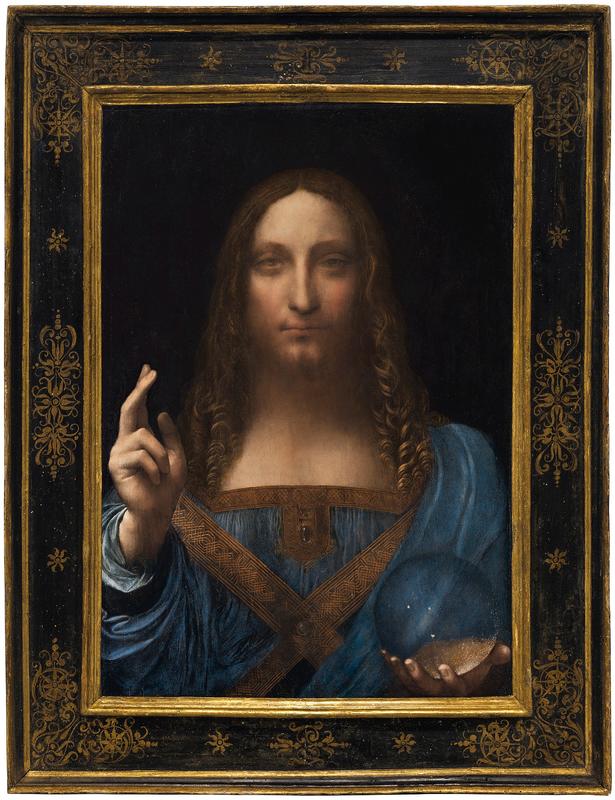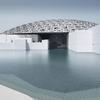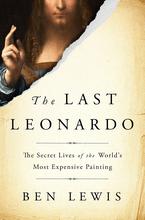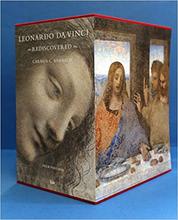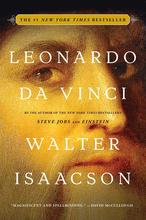More about Salvator Mundi
- All
- Info
- Shop

Contributor
Salvator Mundi by Leonardo da Vinci was auctioned at $75 million more than the cost of the largest production passenger aircraft on Earth.
With a price tag of $450 million dollars, the formerly forgotten da Vinci is not just the most expensive work of art ever sold, but also one of the most expensive single item purchases in history. In fact, until this painting was auctioned in November 2017, the title of the most expensive painting belonged to Interchange by Willem de Kooning which sold for a whopping $150 million less. Money aside (because I could literally spend all day talking about how crazy expensive this painting is), this painting represents one out of the fewer than twenty paintings currently accepted as created by Leonardo da Vinci.
The history of Salvator Mundi has little certainty but what is known is that it was most likely commissioned and completed around 1500. Scholarly consensus indicates the painting was likely commissioned by King Louis XII of France but eventually found its way to King Charles I by 1625 following his marriage to Henrietta Maria. When King Charles I was executed in 1649, the painting was included as part of an inventory of the Royal Collection where it was eventually auctioned off. The painting bounced around between auctions and inheritance until 1763 where it disappeared from record following a final auction.
In 1900, the painting once again emerged, but was badly damaged following a series of seemingly botched restoration attempts. Combined with a significantly altered exterior and a muddled provenance, the artwork was mistakenly attributed to Leonardo's pupil Giovanni Antonio Boltraffio. The painting was sold again in 1958 for $500, adjusted for inflation, and for $10,000 in 2005 to Robert Simon. It was Simon and his colleagues who first believed the painting might actually be an original work of Leonardo da Vinci, starting upon a twelve year journey to verify its authenticity and restore the work to its original form. In 2011, the painting was verified as an original Leonardo and was exhibited at London’s National Gallery as the first verified Leonardo da Vinci painting to appear in over one-hundred years.
Following its stint at the National Gallery, the painting was sold again to a Swiss art dealer who, in turn, sold it to Russian businessman Dmitry Rybolovlev who, also in turn, decided to auction the painting through famed auction house Christie’s. In an extremely unusual move, Christie’s launched a massive marketing campaign with the help of an outside marketing agency, which it had never done previously. The pre-auction viewings in San Francisco, Hong Kong, London, and New York brought in as many as 27,000 people to view Jesus Christ as the “Savior of the World.”
The painting was ultimately purchased through a series of intermediaries by Abu Dhabi’s Department of Culture and Tourism that is expected to exhibit the painting in the Louvre Abu Dhabi. This is anticipated to make Salvator Mundi the most famous painting at the Louvre Abu Dhabi like its sister Mona Lisa at the Louvre Paris also by Leonardo da Vinci.
Sources
- https://www.reuters.com/article/us-art-auction-da-vinci-abudhabi/abu-dh…
- http://www.telegraph.co.uk/news/worldnews/northamerica/usa/12169527/Bil…
- https://www.cnbc.com/2017/11/17/da-vincis-salvador-mundi-went-from-unde…
- https://www.nytimes.com/2017/12/08/world/middleeast/saudi-arabia-salvat…
- http://www.christies.com/features/The-last-da-Vinci-Salvator-Mundi-8598…
- http://www.christies.com/features/Salvator-Mundi-timeline-8644-3.aspx
Featured Content
Here is what Wikipedia says about Salvator Mundi (Leonardo)
Salvator Mundi (Latin for 'Savior of the World') is a painting attributed in whole or part to the Italian High Renaissance artist Leonardo da Vinci, dated c. 1499–1510. Long thought to be a copy of a lost original veiled with overpainting, it was rediscovered, restored, and included in an exhibition of Leonardo's work at the National Gallery, London, in 2011–2012. Christie's, which sold the work in 2017, stated that most leading scholars consider it an original work by da Vinci, but this attribution has been disputed by some leading specialists, some of whom propose that he only contributed certain elements; others believe that the extensive restoration prevents a definitive attribution.
The painting depicts Jesus Christ in anachronistic blue Renaissance attire, making a gesture of blessing with his right hand, while holding a transparent, non-refracting crystal orb in his left, signalling his role as Salvator Mundi and representing the celestial sphere of the heavens. Approximately thirty copies and variations of the work by pupils and followers of Leonardo have been identified; two are considered to have been produced during Leonardo's lifetime. Two preparatory chalk and ink drawings of the drapery by Leonardo are held in the British Royal Collection.
The painting was sold at auction for US$450.3 million on 15 November 2017 by Christie's in New York to Prince Badr bin Abdullah Al Saud, setting a new record for the most expensive painting ever sold at public auction. Although Prince Badr allegedly made the purchase on behalf of Abu Dhabi's Department of Culture and Tourism, shortly afterwards it was reported that he was a stand-in bidder for his close ally, the Saudi Arabian Crown Prince Mohammed bin Salman. The painting has not been publicly exhibited since the 2017 Christie's auction, and since late 2020 has been in storage in Saudi Arabia reportedly awaiting a museum and cultural center to be completed in Al-'Ula.
Check out the full Wikipedia article about Salvator Mundi (Leonardo)

